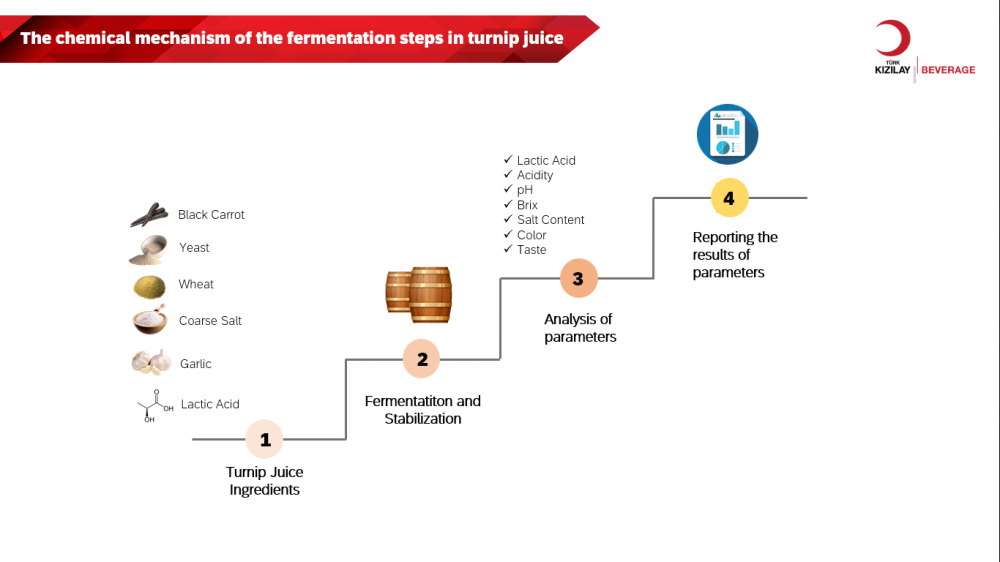JOURNAL 3040
Records of Agricultural and Food Chemistry
Year: 2024 Issue: 3 Special Issue: Abstracts 3rd. TCS, International Food Chemistry Congress February 29-March 03,2024 Antalya Türkiye
p.16 - 16
Viewed 1435 times.
GRAPHICAL ABSTRACT

ABSTRACT
Turnip juice, a fermented beverage, will be considered a functional drink due to its antioxidant potential derived from the carotenoids, chlorogenic acids, and anthocyanins in its composition. In the production of turnip juice, black carrot, yeast, wheat, salt, garlic, and lactic acid are used. There are two main production methods: traditional and direct methods. In both methods, the result is obtaining red-colored and sour-flavored turnip juice due to the passage of colored components into the liquid during the fermentation process and the increase in total acidity due to the effect of lactic acid bacteria. Changes in pH, brix, salt, total acidity, lactic acid, taste, smell, and color parameters are observed in turnip juice during the fermentation process. One of the main reasons for these changes is the fermentation reactions carried out by lactic acid bacteria. The fermentation process in turnip juice affects the pH value, which can change the color of turnip juice. This highlights the ability of anthocyanins to be present in different colors or colorless forms at different pH levels. The acidic environment formed by the accumulation of lactic acid prevents the proliferation of harmful microorganisms, enhancing the microbial stability of turnip juice. This result also affects the formation of the specific taste and aroma of turnip juice. Reactions of this kind during fermentation create the unique taste and aroma of turnip juice. The fermentation period in turnip juice enhances its organoleptic properties and increases antioxidant capacity. The interpretation of these reaction results is possible through laboratory analyses performed during the fermentation process [1-3].
KEYWORDS- Turnip juice
- fermentation
- lactic Acid